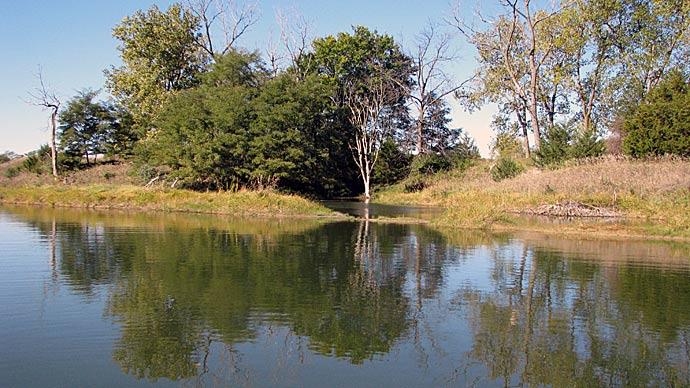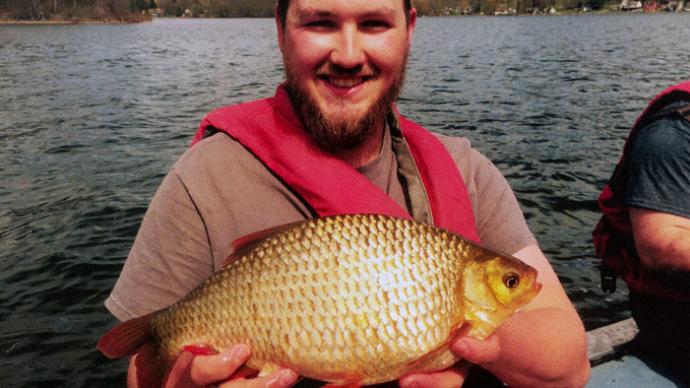Exotic clothing, exotic cars, exotic nightlife, exotic aquatic species... Okay, maybe it's cool to be trendy in social circles, but in nature, the effects of a " trend " can be quite far-reaching. In the northern states, we have witnessed the introduction of various exotic aquatic species, including Eurasion watermilfoil, sea lamprey and curly-leaf pondweed. Their continued expansion could be potentially hazardous to lakes and ponds.
But more recently, the most active threat could be the zebra mussel. The clam-like bi-valve is here in the U.S. - in both public and private waters - and it's spreading fast! Anglers and pond owners should be on the alert for these unwelcome newcomers. Here's why:
The zebra mussel (Dreissena polymorpha) feeds on suspended phytoplankton and zooplankton, which are abundant in northern water bodies. An adult zebra mussel can filter just over one liter of water per day, removing nutrients that would otherwise be used by native species.
Worse, single colonies of zebra mussels may contain over 70,000 mussels per square meter. Imagine the impact on first- and second-order consumers - such as the forage species that support the gamefish in your lake or pond.
The zebra mussel is native to the Caspian Sea region of Russia, but during the late 1700's and early 1800's, newly constructed canals greatly increased the zebra mussel's range. It soon invaded most of Eastern Europe and Great Britain.
The zebra mussel is believed to have arrived in the U.S. about 1985 or '86, via the Great Lakes. Ballast water, discharged from transoceanic ships into Lake St. Claire, is probably responsible for the introduction.
In the nutrient-rich waters of Lake St. Claire and Erie, zebra mussels flourished. Although zebra mussels are small (adults are only about 1 3/4 to 2 inches in length), they certainly prove there is strength in numbers.
Today, the zebra mussel has spread throughout the Great Lakes. Waterways in 18 states and the Mississippi, Ohio, Arkansas and Tennessee rivers have all been affected.
The zebra mussel's affinity for colonizing on hard surfaces has severely reduced native clam populations. Boat motor intakes have become another favorite home, as well as the water intakes for municipalities and other forms of industry. So many sharp, empty zebra mussel shells line the shoreline of Lake Erie, beach combers are staying home rather than risk foot and ankle injuries.
With the base of the food chain greatly reduced, concerned fisheries biologists are looking for natural enemies that might provide lake-wide control. Crustacean-eating species such as diving ducks, some puddle ducks, drum (sheepshead) and even yellow perch have been observed feeding on the critters.
Scientists also are looking into a possible disruption of the zebra mussel's reproductive process. Like fish, zebra mussel eggs are fertilized externally, which calls for a perfectly timed release from both sexes. There may be a way to interrupt this natural timing, reducing or eliminating the fertilization step altogether.
While the scientific community searches for controls, it is imperative that pond owners and users take a proactive role in stopping the spread of the zebra mussel. Many state governments are enforcing strict penalties on the transportation of exotic species.
The following checklist is an excellent guideline for reducing the transport of this exotic. Remember, the zebra mussel larvae, or veliger, is only about the size of the point on a ballpoint pen. You must consider all possible water sources within your vessel.
Professor Dr. Ladd Johnson of Ohio State University and the Minnesota Department of Natural Resources cite a survey of boat-users in Michigan. They recommend the following:
- All boats and trailers should be thoroughly cleaned, making sure weeds are pulled off and boat hulls are free of unwanted growth - before leaving the landing.
- Flush engine cooling system, live wells and bilge with tap water. If possible, use hot water.
- Do not re-use bait if exposed to infested waters.
- Dry boat and other equipment for at least 48 hours before using in uninfected waters.
- Examine boat exterior for mussels if it has been docked in infested waters; if mussels are found or exterior is heavily fouled by algae, either clean fouled surfaces or leave boat out of the water for at least 5 days before entering uninfected waters.
The small, inland pond owner should be aware of the potential for zebra mussel infestation. Although I have not yet seen them in these smaller ecosystems, birds, fur bearing animals and live bait used in infested waters can spread the small veligers. With a growing number of infested lakes, I suspect it is only a matter of time.
Six years ago I received a call from a fishing guide on Lake Geneva in southern Wisconsin. He had hooked and retrieved a log from the bottom and began describing a "growth" he had never seen before.
This was probably one of the first signs of trouble for this popular vacation destination. Last season I walked a portion of the lake's shoreline and found zebra mussels had covered almost every inch of stone along the beachfront and nearby pier footings. I suspect that bilge water from some of the large boats probably brought the mussels in from recent trips on Lake Michigan.
History tells us that an exotic species population should peak a few years after infestation and then decline. Predation and carrying capacity will dictate population trends from ecosystem to ecosystem.
With any luck, this zebra mussel "trend" will lose its momentum naturally. In the meantime, we will need to monitor our fisheries in these infected waters closely. It is up to all of us to keep a watchful eye out and do your part to enjoy our natural lakes and rivers responsibly!
Reprinted with permission from Pond Boss Magazine



